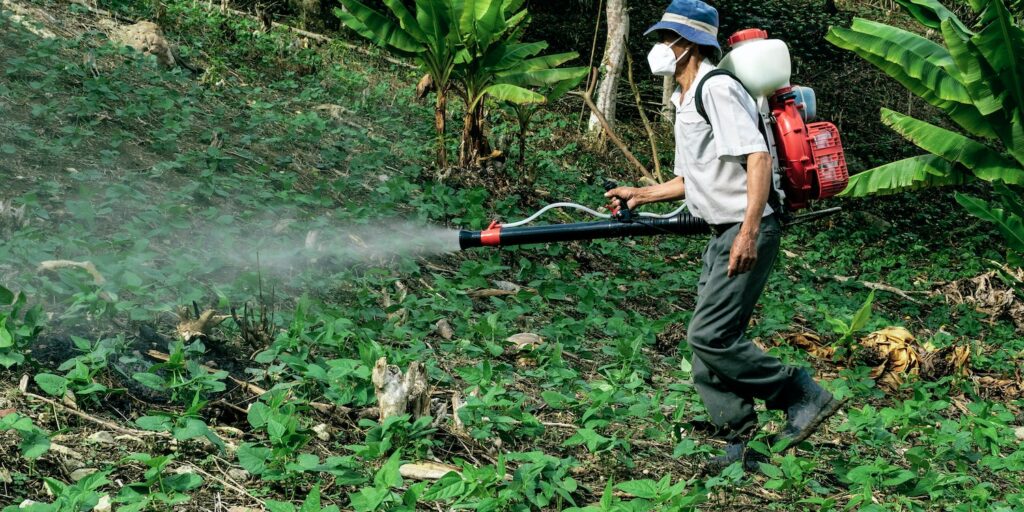One of my April reads was Slow Death by Rubber Duck: How the Toxic Chemistry of Everyday Life Affects our Health by Rick Smith and Bruce Lourie with Sarah Dopp. As clearly stated on the title, the book reveals how several chemicals which are present in some of the products we use in our everyday life affects our health. It also shows how the average citizen can force the government to regulate the use of toxic chemicals, protecting lives.

“Toxic chemicals are now found at low levels in countless applications, in everything from personal-care products and cooking pots and pans to electronics, furniture, clothing, building materials and children’s toys.”
These two set out to show how humans are unknowingly exposed to all forms of toxic chemicals by purposely exposing themselves to a good number of them. They carried out series of experiments which mimic real life situations in an attempt to expose the now so common sources of pollution.
“From the moment we get up from a good night’s sleep under wrinkle-resistant sheets (which are treated with the known carcinogen formaldehyde) to the time we go to bed at night after a snack of microwave popcorn, pollution surrounds us.”
For their experiment, experts were consulted and the series of laboratory tests carried out followed standard science protocols. Seven toxic chemicals were analyzed in this book. These chemicals were discussed in chapters in the first person.
Chapter 2 – Rick carries out an experiment with phthalates which are found in personal-care products like shampoos, conditioners, soaps, lotions, and colognes, disguised as “fragrance” or “parfum” and in kids toys.
Chapter 3 – Bruce talks about Perfluorochemicals (PFCs) like Teflon, “the nonstickies” which are common in fast food wrappers, pizza boxes and microwavable popcorn bags, as well as the legendary nonstick frying pan.
Chapter 4 – Rick dives into Polybrominated Diphenyl Ethers (PBDE) and brominated flame retardants.
Chapter 5 – Bruce deals with the toxicity of mercury and exposes himself to mercury from eating fish.
Chapter 6 – Rick talks on our obsession with germs and the chemical Triclosan which is found in products tagged “antibacterial” or “antimicrobial.” He also exposes himself to this chemical.
Chapter 7 – Bruce targets the pesticides used in spraying our lawns and gardens.
Chapter 8 – Rick experiments with plastics showing how Bisphenol A (BPA), a hormone disruptor linked to early onset of puberty, obesity, cancers and decreased sperm count, leaches from polycarbonate plastic when heated, especially in baby bottles.
What stood out for me was the way the reports and researches by scientists were handled by individuals, organizations, agencies and governments. I kept wondering why despite all the science, it took a lot of time to regulate some of these toxic chemical – some of which are still not regulated till date.
I really love how Bruce and Rick highlighted different ways and measures we can take to avoid some of these chemicals and reduce our exposure to them. They didn’t just tell us this stuff is out there, they gave solutions.
Slow Death by Rubber Duck is a book I’m recommending for everyone. It’s not just for environmentalists, toxicologists, or scientists in general, it’s for everyone.
If you’re up to reading this book, you can get it here on Thrift Books.
“For readers wishing to understand some of the crazy ideas behind the proliferation of toxins around the world, we hope that this book will shed some new light on the issues. A light that is too often obscured by chemical companies and their batallions of hired-gun consultants, industry-funded academics and conflicted government bureaucrats.”
Rick Smith is one of the leading environmentalist in Canada, with a doctorate degree in Biology from the University of Guelph, while Bruce Lourie is “an influential environmental thinker” and the founder of one of the largest environmental consultancies in Canada, working alongside with government and other organizations. Sarah Dopp handled the experiments, blood and urine testing and laboratory works.

